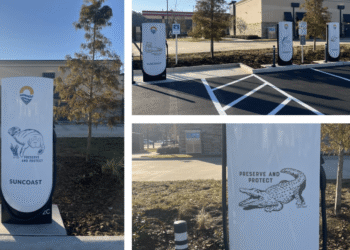The $7,500 EV tax credit has officially expired, and its demise has sparked debate about its impact on EV manufacturers in the United States. Many wonder how the loss of this competitive advantage will affect companies that relied heavily on the discount. Surprisingly, Tesla might be better off without it.
In fact, Tesla is poised to thrive in the absence of the tax credit, and the company’s fourth quarter, which has just begun, is expected to be a bright spot. Here are five reasons why Tesla might benefit from the tax credit’s expiration:
Price Cuts Ahead
With the tax credit gone, Tesla will need to adjust its pricing strategy. In the past, when the company lost the tax credit after reaching its cap in 2019, it responded by introducing a more affordable model, the Model 3, which boosted deliveries by over 50%. The tax credit can distort the market, allowing companies to offer discounts with government help. Now, Tesla can focus on using its manufacturing and technological efficiencies to increase affordability and fluctuate pricing as needed. Potential price cuts could be on the horizon.
A Level Playing Field
Companies like Ford and General Motors have benefited from the tax credit, but their financial situations differ significantly from Tesla’s. While they struggle to make a profit on their EV projects, relying on the tax credit to mask high production costs, Tesla has been profitable for some time. The Cybertruck, for example, achieved a positive gross margin within its first year of production. Without subsidies, the financial weaknesses of Tesla’s competitors will be exposed, and they may scale back their EV efforts. This will ultimately benefit Tesla.
Tesla’s Maturity and Investor Confidence
Tesla is no longer seen as a subsidy-dependent startup. The company has proven its ability to perform well without the tax credit, and its maturity will boost investor confidence. CEO Elon Musk has long advocated for ending government subsidies, stating that their cancellation “will only help Tesla.” Tesla’s self-sufficiency, driven by manufacturing efficiencies and vertical integration, will shine through in the coming months.
Innovation Unfettered
Subsidies can sometimes inhibit true innovation, as companies may become complacent with government support. Tesla, however, has shown that it can achieve significant breakthroughs without relying on subsidies. After losing the tax credit in 2019, the company introduced the Cybertruck and scaled its energy storage projects to gigawatt-hours. Without the crutch of subsidies, Tesla will be driven to innovate and improve its products.
Affordability Will Drive Sales
Tesla is set to launch its affordable models this quarter, and without the tax credit, these cars will be highly sought after. If Tesla can launch a model near $30,000, it will be highly competitive with other affordable EVs on the market, such as the 2025 Nissan Leaf S Trim ($28,140), 2025 Fiat 500e Base Trim ($32,500), and 2025 Chevrolet Equinox EV ($33,600). This will help Tesla regain market share and maintain its delivery figures.
Overall, Tesla is well-positioned to benefit from the expiration of the $7,500 EV tax credit. The company’s focus on innovation, affordability, and manufacturing efficiencies will drive its success in the coming months and years.






![Lucid Motors launches Gravity Touring SUV, starting below $80,000 [Video]](https://thecruisectrlr.com/wp-content/uploads/2025/11/Lucid-Gravity-Touring-Hero-350x250.jpg)




